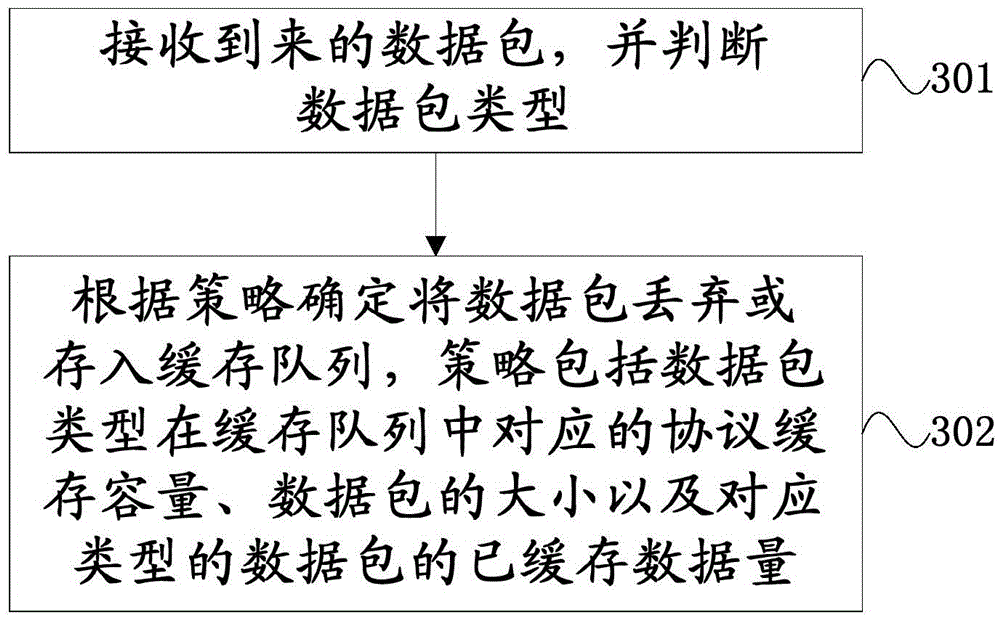Cache sharing method and device
A technology of cache and cache capacity, applied in the field of communication, can solve the problems of lack of resources and low resource utilization, and achieve the effect of sharing and isolation
- Summary
- Abstract
- Description
- Claims
- Application Information
AI Technical Summary
Problems solved by technology
Method used
Image
Examples
Embodiment Construction
[0040]The technical solutions of the present invention will be described in further detail below with reference to the accompanying drawings and embodiments.
[0041] The flowchart of an embodiment of the cache sharing method of the present invention is as follows image 3 shown.
[0042] In step 301, when a new data packet is received, the process of queue management is triggered to determine the type of the incoming data packet. The data packet type may refer to the operator type to which the data packet belongs, or may refer to the service type of the data packet.
[0043] In step 302, it is determined to discard or store the data packet in the buffer queue according to the protocol buffer capacity corresponding to the data packet type in the buffer queue, the size of the data packet, and the buffered data volume of the corresponding type of data packet. Each data packet type can have a certain protocol buffer capacity or protocol buffer ratio in the buffer queue. The pr...
PUM
 Login to View More
Login to View More Abstract
Description
Claims
Application Information
 Login to View More
Login to View More - R&D
- Intellectual Property
- Life Sciences
- Materials
- Tech Scout
- Unparalleled Data Quality
- Higher Quality Content
- 60% Fewer Hallucinations
Browse by: Latest US Patents, China's latest patents, Technical Efficacy Thesaurus, Application Domain, Technology Topic, Popular Technical Reports.
© 2025 PatSnap. All rights reserved.Legal|Privacy policy|Modern Slavery Act Transparency Statement|Sitemap|About US| Contact US: help@patsnap.com



